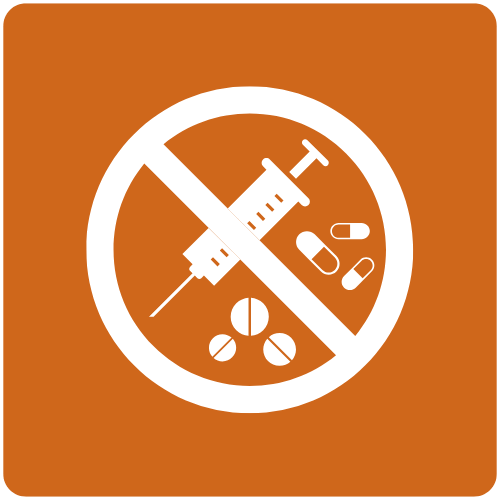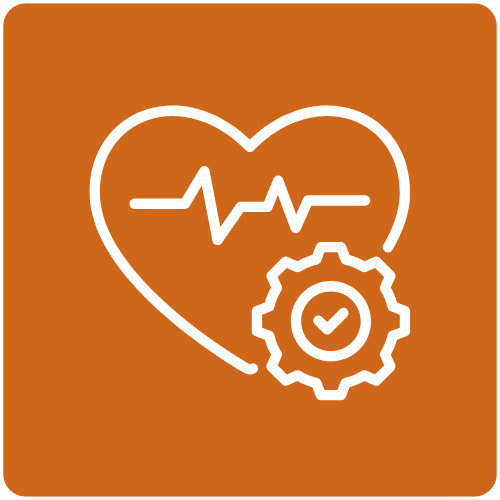
Monett community
The Monett Community includes Lawrence and Barry counties in Missouri.

PART 1: INTRODUCTION
Executive Summary
Since 2016, hospital systems, local public health agencies (LPHAs) and other healthcare partners in the greater Ozarks have worked together to release comprehensive Community Health Needs Assessments (CHNAs) every three years. This group, known as the Ozarks Health Commission (OHC), released community-level reports in 2016, 2019 and 2022. For the fourth iteration, the 2025 assessment has been compiled into community-level and regional snapshots, continuing the regional scope introduced in 2022.
Healthcare partners and LPHAs develop the results of these assessments into Community Health Improvement Plans (CHIPs). Organizations use to target areas of health need and disparity in communities and create actionable plans to make them better over time.
The scope of the OHC region includes 33 counties across three states. These counties make up seven different communities, who each develop reports based on their community-level data. Information about data collection can be found in the OHC Regional Report.
The following is the 2025 Monett Community CHNA. This report aims to be a valuable resource for health care partners, civic organizations and people who live, work and seek health care in the Monett Community.

Service Area
The Monett Community includes Lawrence and Barry counties in Missouri. It encompasses the service areas of Mercy Hospital Cassville, Mercy Hospital Aurora, CoxHealth Hospital Monett, the Barry County Health Department and the Lawrence County Health Department. The area includes state parks, lakes, rural communities, small townships and three cities—Monett, Cassville and Aurora.

Population overview
The Monett Community is home to 79,932 residents. From 2010-2020, the population declined by 2%. Population decline causes concerns like aging populations, job losses, declining tax revenues, and shrinking schools and neighborhoods.
Of the population, 77% is classified as rural and 23% classified as urban. Residents of the community mostly identify as non-Hispanic White (84%), while approximately 9% identify as Hispanic. 7% identify as another race or multiple races.
Of the total population in the Monett Community, 24% are under the age of 18, 56% are between the ages of 18-64, and 20% are age 65 or older. The population is, on average, older than both the OHC region and nation. Older residents are more likely to be living with chronic illnesses and require access to more health services.

Population by age
.png)
Population by race and ethnicity
.png)
Rural vs. urban population
.png)
Populations of interest
Approximately 16% of the Monett Community is living with a disability, which is higher than the State rate of 15% and the national rate of 13%. This may contribute to difficulties accessing health care and disparities amongst community members with disabilities.


Access to care
Close to half of Monett Community residents have encountered barriers to accessing appropriate medical care in the last year. Financial barriers and scheduling (inaccessibility of appropriate/local/ timely care) were most prevalent. Over 31% of community partners in the Monett Community identified access to care as the largest health barrier. Simultaneously, over 34% highlighted broad access to services as a health benefit. The mixed sentiments surrounding access to care among community partners, coupled with the high prevalence of access barriers noted among community members, indicates that improving access to timely, local health services in our community is needed.

PART 2: Methodology
Working group
The Monett Community steering committee members—represented by the Lawrence County Health Department, CoxHealth System and Mercy—formed a working group to identify priority health issues, analyze quantitative and qualitative data, and guide the prioritization process for the greater group of community partners.

Working group
The Monett Community steering committee members—represented by the Lawrence County Health Department, CoxHealth System and Mercy—formed a working group to identify priority health issues, analyze quantitative and qualitative data, and guide the prioritization process for the greater group of community partners.


Community stakeholder and partner meeting
The Monett Community convened a special meeting of community stakeholders and partners to assess and prioritize identified health issues through primary and secondary data sources and to further incorporate community feedback. Representatives of public agencies, nonprofit organizations, local collaboratives, coalitions and community leaders were invited to a virtual meeting.
On January 7, 2025, 61 community partners and collaborators representing health care, education, public health, libraries, law enforcement, community-based organizations and court systems gathered. Following an overview of the OHC’s methodology and presentation of instructions and expectations, working group representatives presented health issues. They highlighted community input, associated health factors and outcomes in which the Monett Community experienced worse rates than OHC region, state and national rates. Following a final summary and discussion, the group prioritized three top health issues.

PART 2: Community health priorities

Mental health

Heart health

Diabetes
Mental health
In the Monett Community, 19% of adults have poor mental health. This rate is about even with the OHC region—at almost 19%—and higher than Missouri at 17%.

Anxiety / depression

Substance use

Access to care

Anxiety / depression
The Monett Community exhibits higher rates of depressive disorders (735.2 per 10,000) than the OHC region (577.9 per 10,000). Depressive disorders are most prevalent among residents aged 65 to 84, women, those insured by Medicare and Black individuals.
The Monett Community also exhibits higher rates of anxiety disorders (969.2 per 10,000) than the OHC region (764.7 per 10,000). Anxiety disorders are most prevalent among residents aged 75 to 84, women, those insured by Medicare and those who identify as Black or American Indian/Alaska Native.
Substance use
The rates of adults in the Monett Community who report excessive drinking and binge drinking in the last 30 days falls below the average rates in the OHC region.
The Monett Community exhibits higher rates of alcohol use disorder (159.2 per 10,000) than the OHC region (153.0 per 10,000) but not the state (207.3 per 10,000). Alcohol use disorder rates per 10,000 are highest among residents who are aged 20 to 39, men, American Indian or Alaska Native, or who are insured by Medicaid.
Opioid use disorder (OUD) rates in the Monett Community (71.8 per 10,000) slightly exceed the OHC region (69.5 per 10,000) but fall short of the state (81.4 per 10,000). Rates of prescription opioid misuse in the Monett Community (204.4 per 10,000) greatly exceed the rates exhibited across the OHC Region (163.1 per 10,000) and the state (199.8 per 10,000). The populations with the highest OUD rates in the community include individuals who are aged 20 to 39, female, White or insured by Medicare. Prescription opioid misuse is a health issue most greatly affecting residents who are between 65 and 84 years old, women, White or are insured by Medicare.
The Monett Community exhibits higher rates of tobacco use disorder (1,615.2 per 10,000) than the OHC region (1,197.0 per 10,000), and the state (1,496.1 per 10,000). Just under 24% of adults 18+ are current smokers, compared to 22% of adults in the OHC region and 19% of adults in the state. Tobacco use disorder rates are highest among residents who are age 20 to 39, Black or insured by Medicare.


Access to mental health care
Mental health provider rates in the Monett Community (36 per 100,000) are significantly lower than the OHC region (133 per 100,000) and the state (138 per 100,000). One in three residents have encountered barriers to accessing appropriate mental health care in the last year. Scheduling and financial barriers were most prevalent.
Over 19% of adult residents report not being able to access appropriate counseling services for mental health issues such as depression, anxiety, trauma or others. Nearly 21% report not being able to access appropriate counseling services for their children’s mental health needs.
Heart health
Poor heart health is the leading cause of death for those living in the Monett Community. The heart disease mortality rate in the Monett Community is 239.1 per 100,000 people, which is higher than the OHC region (218.1 per 100,000) and the state (194.6 per 100,000). While these conditions are often associated with the elderly population, the effects can be felt much earlier. Often, high blood pressure progresses to heart disease, and heart disease leads to heart failure.

Hypertension

Ischemic heart disease

Heart failure
Hypertension
Hypertension, or high blood pressure, is a common chronic condition that can be dangerous or life threatening if untreated. According to the Mayo Clinic, age, race, family history, being overweight, and lifestyle factors like tobacco use or a lack of exercise are risk factors.¹
The risk of developing high blood pressure increases with age. High blood pressure is more common in men until about age 64, and women are more likely to develop the condition beyond age 65. High blood pressure is also more common among Black people, for whom the condition tends to develop sooner in life.
These population-based trends are reflected in the Monett Community, where individuals over age 75, women, and Medicare beneficiaries exhibited the highest rates of hypertension in hospital visit data from 2020-2022.
heart disease mortality
Crude death rate per 100,000 population
.png)
Ischemic heart disease
According to the American Heart Association, ischemic heart disease (also known as coronary artery disease or coronary heart disease) is heart damage caused by narrowed heart arteries. Narrowed arteries make it more difficult for blood and oxygen to reach the heart. This can cause chest pain or discomfort and lead to heart attack.²
Hospital visit data from 2020-2022 shows that patients presented with ischemic heart disease at a rate of 864.0 per 10,000 population, exceeding the rate in the OHC region (735.0 per 10,000). Like many chronic conditions, ischemic heart disease acutely impacts older adults. In the Monett Community, individuals aged 75-84 visited the hospital with heart disease at a rate of 4,164.1 per 10,000, and Medicare beneficiaries at a rate of 4,000 per 10,000. Men also exhibited higher rates of ischemic heart disease (1,131.2 per 10,000) than women (596.8 per 10,000).
Heart failure
Heart failure is a condition that describes a weakened heart that is no longer able to keep up with its workload.³ Individuals with heart failure experience symptoms such as fatigue, shortness of breath, and difficulty completing everyday activities like climbing stairs or carrying groceries. While there is usually no cure, many people with heart failure lead an enjoyable life when the condition is managed through heart failure medication and a healthy lifestyle.
Hospital visit data from 2020-2022 shows that patients presented with heart failure at a rate of 664.3 per 10,000 population, exceeding the rate in the OHC region (549.8 per 10,000). Like many chronic conditions, heart failure acutely impacts older adults. Individuals over 85 years of age presented to the hospital with heart failure at a rate of 3,546.5 per 10,000, and Medicare beneficiaries at a rate of 3,224.2 per 10,000. Men also exhibited higher rates of heart failure (723.1 per 10,000) than women (605.4 per 10,000).

Diabetes
According to the American Diabetes Association, Type 1 diabetes is an autoimmune disease.⁴ When a person has Type 1 diabetes, the immune system mistakenly treats the beta cells in the pancreas that create insulin as foreign invaders and destroys them. When enough beta cells are destroyed, the pancreas can’t make insulin or makes so little of it that a person needs to take insulin to live.
Insulin is a hormone that helps blood glucose (blood sugar) enter the body’s cells so that it can be used as energy. If a person has diabetes, blood sugar can’t enter cells, so it builds up in the bloodstream. This causes high blood sugar (hyperglycemia). Over time, high blood sugar harms the body and can lead to diabetes-related complications if not treated.
In Type 2 diabetes, the body does not use insulin properly—this is called insulin resistance. At first, beta cells make extra insulin to make up for it. Over time, the pancreas can’t make enough insulin to keep blood glucose at normal levels. Type 2 diabetes develops most often in middle-aged and older adults but is increasing in young people.
Treatment for people with Type 2 diabetes includes healthy eating and regular exercise. However, a health care provider may also prescribe oral and injectable medications (including insulin) to help meet target blood sugar levels. Diabetes is diagnosed at an A1C of greater than or equal to 6.5%.
Rates of Type 2 diabetes per 10,000 residents are higher in the Monett Community than in the OHC region.
Type 2 diabetes is more common in people who are overweight or obese. 28% of residents in The Monett Community are obese. In addition, almost half of the population has no access to exercise opportunities. One in four residents do not regularly eat healthy meals. However, 14% are food insecure, which creates barriers to healthy eating because fruits, vegetables and whole grains can be hard to access. 16% of the population lives below the poverty level which can also affect healthy lifestyle choices.

Type 2 diabetes hospital visits
.png)

PART 3: Closing Remarks

Conclusion
While this overview of health in the Monett Community is not comprehensive, it gives an important glimpse into areas of concern reflected in both data and community feedback. The 2025 assessment will be used to inform public health and health care initiatives. These initiatives will be outlined in a forthcoming Community Health Improvement Plan.
Dissemination
The OHC regional report and all community-level reports are available to the public through various channels
Websites
Ozarks Health Commission
CoxHealth
Mercy Hospital Springfield
Printed copies
Printed copies will be available by request through health care partners and LPHAs. Please refer to organization websites or contact an organization directly
Social media
Lawrence County Health Department
facebook.com/pages/Lawrence-CountyHealth-Department/112761872148312
Mercy Hospital Springfield
Health services available
Barry County Health Department
Burrell Behavioral Health
Clark Community Mental Health Center
myclarkcenter.com
CoxHealth
Jordan Valley Community Health Center
Lawrence County Health Department
Mercy
The Arc of the Ozarks

AckNowledgements
Thank you to Monett Community partners and residents for contributing to this assessment through your feedback. Your contributions provide rich context to the vast health care data compiled for this report.
Thank you to the OHC Steering Committee for your collaboration and resource sharing during every step of the CHNA process.
Thank you to the Monett Community representatives in the OHC Steering Committee for your contributions toward data collection and creation of the report.
Citations
¹ Mayo Clinic Staff. “High blood pressure (hypertension).” Mayo Clinic. Last modified February 29, 2024. https://www.mayoclinic.org/diseases-conditions/high-blood-pressure/symptoms-causes/syc-20373410.
² Ischemic Heart Disease and Silent Ischemia.” American Heart Association. Last modified December 11, 2024. https://www.heart.org/en/health-topics/heart-attack/about-heart-attacks/silent-ischemia-and-ischemic-heart-disease.
³ “What is Heart Failure?.” American Heart Association. Last modified March 22, 2023. https://www.heart.org/en/health-topics/heart-failure/what-is-heart-failure.
⁴ “Understanding Type 1 Diabetes.” American Diabetes Association. https://diabetes.org/about-diabetes/type-1.

